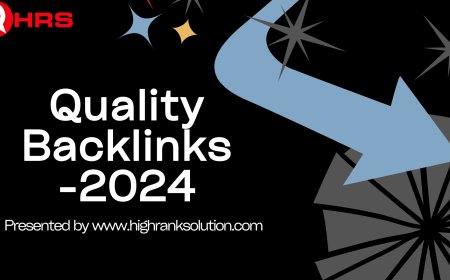How to Get Started as a Freelance Web Designer
Becoming a freelance web designer is an exciting career path that offers flexibility, creativity, and the opportunity to work on a variety of projects. However, getting started can be daunting. This comprehensive guide covers everything you need to know, from beginner tips and essential tools to building a portfolio and staying current with web design trends.
Tips for Beginners
1. Understand the Basics
- Learn the Fundamentals: HTML, CSS, and JavaScript are the building blocks of web design. Familiarize yourself with these languages before diving into more advanced topics.
- Study Design Principles: Learn about color theory, typography, and layout design. These principles will guide you in creating visually appealing and user-friendly websites.
2. Get the Right Education
- Online Courses and Tutorials: Websites like Coursera, Udemy, and freeCodeCamp offer courses that can help you learn web design at your own pace.
- Certifications: Earning certifications from recognized organizations can boost your credibility and attract clients.
Essential Tools and Software
1. Design Tools
- Adobe Creative Suite: Includes Photoshop, Illustrator, and XD for designing and prototyping.
- Sketch: A vector graphics editor and digital design toolkit.
- Figma: A web-based design tool with real-time collaboration features.
2. Development Tools
- Visual Studio Code: A powerful, lightweight code editor.
- Git and GitHub: For version control and collaboration.
- Chrome DevTools: For debugging and testing your websites.
3. Project Management Tools
- Trello: A visual project management tool.
- Asana: Helps manage tasks and deadlines.
- Slack: For team communication and collaboration.
Building a Portfolio from Scratch
1. Showcase Your Best Work
- Create Sample Projects: If you’re just starting, create sample websites to demonstrate your skills.
- Highlight Diverse Skills: Include projects that showcase different aspects of web design, such as e-commerce sites, blogs, and landing pages.
2. Portfolio Layout and Design
- Keep It Simple: Ensure your portfolio is easy to navigate and visually appealing.
- Include Case Studies: Provide detailed descriptions of your projects, including your design process and the results achieved.
3. Update Regularly
- Add New Work: Continuously update your portfolio with new projects.
- Remove Outdated Work: Keep only your best and most recent work to ensure your portfolio remains relevant.
Top Web Design Trends in 2024
1. Emerging Design Styles
- Minimalism: Clean, simple designs with a focus on usability.
- Dark Mode: Increasingly popular for its aesthetic appeal and reduced eye strain.
- 3D Elements: Adding depth and interactivity to designs.
2. Must-Have Features for Modern Websites
- Responsive Design: Ensures your website looks good on all devices.
- Fast Loading Times: Critical for user experience and SEO.
- Accessibility: Making websites usable for people with disabilities.
3. Predictions for the Future of Web Design
- AI and Machine Learning: Automating design processes and personalizing user experiences.
- Augmented Reality (AR): Enhancing user interaction with immersive experiences.
- Voice Search Optimization: Adapting designs for voice-activated searches.
Effective Time Management Strategies for Freelance Web Designers
1. Balancing Multiple Projects
- Prioritize Tasks: Use the Eisenhower Matrix to categorize tasks by urgency and importance.
- Set Deadlines: Break projects into manageable tasks with clear deadlines.
2. Time-Tracking Tools and Techniques
- Tools: Toggl and Harvest can help you track time spent on different tasks.
- Pomodoro Technique: Work in focused intervals with short breaks to maintain productivity.
3. Avoiding Burnout
- Regular Breaks: Take short breaks throughout the day to recharge.
- Work-Life Balance: Set boundaries between work and personal time.
Building a Strong Online Presence as a Freelance Web Designer
1. Leveraging Social Media Platforms
- LinkedIn: Build a professional profile and connect with potential clients.
- Instagram: Showcase your design work visually.
- Twitter: Engage with the design community and share insights.
2. SEO Tips for Personal Websites
- Keyword Optimization: Use relevant keywords in your content.
- Quality Content: Regularly publish blog posts or articles related to web design.
- Backlinks: Get other reputable sites to link to your portfolio.
3. Networking and Collaboration Opportunities
- Join Online Communities: Participate in forums and groups related to web design.
- Attend Conferences: Network with other professionals and stay updated on industry trends.
- Collaborate on Projects: Partner with other freelancers to expand your skills and reach.
The Importance of UX/UI in Web Design
1. Key Principles of User Experience
- Usability: Ensure your website is easy to use and navigate.
- Accessibility: Design for all users, including those with disabilities.
- Aesthetics: Create visually appealing interfaces that engage users.
2. Enhancing User Interface for Better Engagement
- Intuitive Navigation: Make it easy for users to find what they need.
- Consistent Design: Maintain a cohesive look and feel throughout your site.
- Interactive Elements: Use buttons, forms, and animations to enhance user interaction.
3. Case Studies of Successful UX/UI Implementations
- Examples: Analyze successful websites to understand what makes their UX/UI effective.
- Lessons Learned: Apply insights from these examples to your own designs.
How to Price Your Web Design Services
1. Pricing Strategies and Models
- Hourly Rate: Charge based on the time spent on a project.
- Fixed Price: Set a flat fee for the entire project.
- Value-Based Pricing: Price based on the value you deliver to the client.
2. Negotiating with Clients
- Know Your Worth: Understand the market rates and your skill level.
- Be Transparent: Clearly communicate your pricing and what it includes.
- Flexibility: Be willing to negotiate while ensuring your rates reflect your value.
3. Understanding Market Rates and Value-Based Pricing
- Research: Look at what other freelancers with similar skills are charging.
- Value Proposition: Emphasize the unique benefits you bring to a project.
Creating a Compelling Web Design Portfolio
1. Showcasing Your Best Work
- Quality Over Quantity: Highlight your best projects rather than including everything.
- Diverse Projects: Show a range of skills and project types.
2. Tips for Portfolio Layout and Design
- User-Friendly Navigation: Make it easy for visitors to browse your work.
- Visual Appeal: Use high-quality images and a clean layout.
3. Highlighting Diverse Projects and Skills
- Variety: Include different types of projects such as e-commerce sites, blogs, and corporate websites.
- Skills: Highlight your expertise in various areas like UX/UI design, responsive design, and SEO.
Essential Skills for a Successful Freelance Web Designer
1. Technical Skills
- HTML, CSS, JavaScript: Master these core web development languages.
- Frameworks and Libraries: Learn tools like React, Vue.js, and Bootstrap.
2. Soft Skills
- Communication: Clearly convey ideas and updates to clients.
- Project Management: Organize and manage your projects efficiently.
3. Continuous Learning and Professional Development
- Stay Updated: Keep up with the latest trends and technologies.
- Professional Growth: Attend workshops, webinars, and courses to enhance your skills.
Client Management Tips for Freelance Web Designers
1. Setting Clear Expectations and Deliverables
- Detailed Proposals: Provide clear outlines of what the project includes.
- Regular Updates: Keep clients informed about the progress.
2. Handling Feedback and Revisions
- Constructive Response: Handle criticism professionally and positively.
- Efficient Revisions: Implement feedback promptly and accurately.
3. Building Long-Term Client Relationships
- Exceed Expectations: Deliver high-quality work and exceptional service.
- Follow-Up: Stay in touch with past clients for potential future projects.
The Role of SEO in Web Design
1. Integrating SEO Best Practices
- Keyword Research: Use relevant keywords throughout your site.
- On-Page Optimization: Optimize meta tags, headers, and content.
2. Importance of Mobile Optimization
- Responsive Design: Ensure your site works well on all devices.
- Page Speed: Optimize loading times for better user experience and SEO.
3. Tools and Resources for SEO-Friendly Design
- Google Analytics: Track and analyze website performance.
- SEO Plugins: Use tools like Yoast SEO for WordPress to optimize your site.
How to Market Yourself as a Freelance Web Designer
1. Crafting a Unique Selling Proposition (USP)
- Identify Your Niche: Focus on what makes you unique.
- Value Proposition: Clearly communicate the benefits you offer.
2. Utilizing Content Marketing and Blogging
- Blog Posts: Write articles on web design topics to attract potential clients.
- Guest Blogging: Contribute to other blogs to expand your reach.
3. Effective Use of Testimonials and Case Studies
- Client Testimonials: Showcase positive feedback from past clients.
- Detailed Case Studies: Provide in-depth examples of your work and its impact.
Dealing with Common Challenges in Freelance Web Design
1. Overcoming Creative Blocks
- Inspiration: Look at other designs and take breaks to recharge.
- Collaboration: Discuss ideas with other designers.
2. Managing Difficult Clients
- Clear Communication: Set expectations from the start.
- Professionalism: Handle disputes calmly and professionally.
3. Balancing Creative Freedom with Client Needs
- Compromise: Find a balance between your vision and the client's requirements.
- Client Education: Help clients understand the value of good design practices.
The Future of Web Design: Emerging Technologies and Trends
1. Impact of AI and Machine Learning on Web Design
- Automation: Use AI tools to streamline design processes.
- Personalization: Implement machine learning for personalized user experiences.
2. Virtual and Augmented Reality in Web Design
- Immersive Experiences: Create engaging AR/VR elements for websites.
- Future Potential: Explore how these technologies can enhance web interactions.
3. The Rise of No-Code/Low-Code Platforms
- Ease of Use: Enable designers to build websites without extensive coding knowledge.
- Increased Accessibility: Allow more people to create web projects.
Legal Considerations for Freelance Web Designers
1. Contracts and Agreements
- Clear Terms: Outline project scope, timelines, and payment terms.
- Legal Protection: Ensure both parties are protected.
2. Intellectual Property Rights
- Ownership: Clarify who owns the final design.
- Usage Rights: Define how the design can be used.
3. Managing Taxes and Financial Planning
- Record Keeping: Maintain accurate records of income and expenses.
- Professional Help: Consider hiring an accountant for tax management.
How to Transition from a Full-Time Job to Freelance Web Design
1. Planning and Preparation
- Financial Cushion: Save enough money to support yourself during the transition.
- Skill Development: Ensure you have the necessary skills and experience.
2. Building a Client Base Before Making the Leap
- Freelance Part-Time: Start freelancing on the side to build a client base.
- Network: Reach out to potential clients and industry contacts.
3. Financial and Emotional Aspects of the Transition
- Budgeting: Plan your finances carefully to manage the inconsistent income.
- Support System: Seek support from friends, family, and other freelancers.
By following these guidelines, you can successfully start and thrive as a freelance web designer, navigating the challenges and opportunities that come your way.
What's Your Reaction?
































